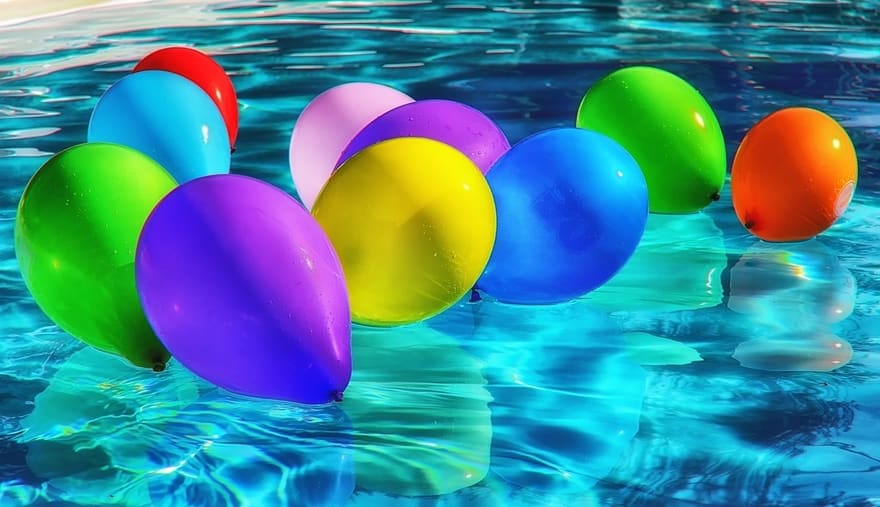
Have you heard of the phrase shock a pool? Do you know What Does Shock Do for a Swimming Pool? Well, let us find out in detail What Does Shock Do for a Swimming Pool!

Understanding the Purpose of Pool Shocks
Maintaining a sparkling and inviting swimming pool requires proper care and attention. One essential aspect of pool maintenance is shock treatment. But what exactly does shock do for a swimming pool? In simple terms, shock treatment is a powerful disinfectant that helps keep your pool water clean, clear, and free of harmful bacteria and algae. By adding shock to your pool, you are effectively “shocking” the water by rapidly increasing the chlorine levels. Now you know What Does Shock Do for a Swimming Pool, let us find out types of pool shocks, how to shock pool and more.

Different Types of Pool Shocks
There are various types of pool shocks available in the market, each with its own unique composition and purpose. The most common types include calcium hypochlorite, sodium di-chlor, and potassium peroxymonosulfate. Calcium hypochlorite shocks are the most popular and widely used. They come in granular form and dissolve quickly, making them easy to apply. Sodium di-chlor shocks, on the other hand, are stabilized and slow-dissolving, making them ideal for regular maintenance. Potassium peroxymonosulfate shocks are non-chlorine shocks that are great for oxidizing the water without increasing chlorine levels.
How Pool Shocks Work [What Does Shock Do for a Swimming Pool]
When you shock your pool, you are essentially super-charging your chlorine, bringing it back to its most effective form. Chlorine works by oxidizing and eliminating contaminants in the water. However, over time, chlorine can combine with sweat, urine, and other organic matter to form chloramines. Chloramines give off a strong chlorine smell and can cause eye and skin irritation. Shocking your pool helps to break down these chloramines, reducing the risk of irritation and creating a more pleasant swimming experience. Additionally, shock treatment kills bacteria, algae, and other microorganisms, ensuring that your pool water remains safe and sanitary.
Benefits of Using Pool Shocks
Using pool shocks offers a range of benefits for both the longevity of your pool and the enjoyment of your swimming experience. Firstly, shock treatment helps to maintain crystal clear water. By eliminating bacteria, algae, and other contaminants, your pool water will remain clean and inviting. Additionally, shocking your pool can help prevent the growth of algae, which can quickly turn your pool water green and make it unsightly. Furthermore, regular shock treatments can extend the life of your pool equipment. By eliminating harmful bacteria and reducing the risk of corrosion, you can avoid costly repairs and replacements.

When and How Often to Shock Your Pool
Regular shock treatments are essential to maintaining a healthy and clean pool. It is recommended to shock your pool once a week, or more frequently if the pool is heavily used or has experienced a high level of rainfall. Rainwater can introduce additional contaminants into your pool, making it more susceptible to bacterial growth. Additionally, if your pool water appears cloudy or has a strong chlorine smell, it may be a sign that it needs to be shocked. Always test your pool water before adding shock to ensure that the chlorine levels are within the recommended range.
Step-by-Step Guide on How to Shock Your Pool
Shocking your pool is a relatively simple process that can be done in a few easy steps. Before you begin, make sure to wear protective gloves and goggles to avoid any contact with the shock. Start by testing your pool water using a reliable test kit. This will help you determine the current chlorine levels and calculate the amount of shock needed. Next, calculate the required amount of shock based on the volume of your pool. Carefully add the shock to the water, following the instructions on the packaging. It is important to distribute the shock evenly across the pool to ensure effective treatment. Allow the shock to dissolve and circulate for a few hours before swimming.

Safety Precautions When Using Pool Shocks
While pool shocks are generally safe to use, it is important to follow some safety precautions to avoid any accidents or injuries. Always handle pool shocks with care and keep them out of reach of children and pets. Wear protective gloves and goggles when handling the shock to protect your skin and eyes. Avoid inhaling the fumes that may be released when adding shock to the water. Additionally, store pool shocks in a cool, dry place away from any flammable materials. Following these safety guidelines will help ensure a safe and enjoyable swimming experience.
Common Misconceptions About Pool Shocks
There are a few misconceptions surrounding pool shocks that are worth addressing. One common misconception is that shock treatment is only necessary for visible pool problems, such as algae growth. In reality, shock treatment is a preventive measure that helps maintain water quality and prevent the growth of bacteria and algae. Another misconception is that shocking a pool will instantly clear up cloudy water. While shock treatment can help improve water clarity, it may not be the sole solution for persistent cloudiness. In such cases, it is advisable to consult a pool professional for further assistance.
YouTube Video on How To SHOCK a Swimming POOL
Conclusion and Final Tips for Maintaining a Clean and Healthy Pool
In conclusion, shock treatment is an essential part of maintaining a clean and healthy swimming pool. By super-charging your chlorine and eliminating contaminants, shock treatments help keep your pool water clear, safe, and inviting. Regular shock treatments, once a week or more frequently if needed, will ensure that your pool remains in top condition. Remember to follow the step-by-step guide and safety precautions when adding shock to your pool. By taking proper care of your pool and staying consistent with shock treatments, you can enjoy a refreshing and enjoyable swimming experience all season long.
Congratulations! You’ve reached the end of the article. Now that you have a better understanding of what shock does for a swimming pool, it’s time to put that knowledge into practice. Remember to regularly shock your pool to keep the water clean and clear. Enjoy a carefree and rejuvenating swim in your sparkling pool!
